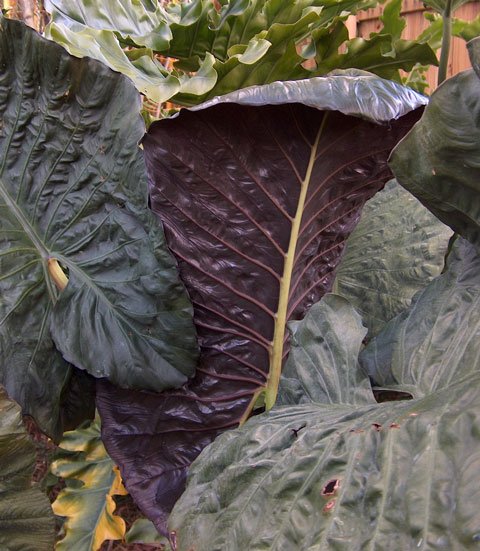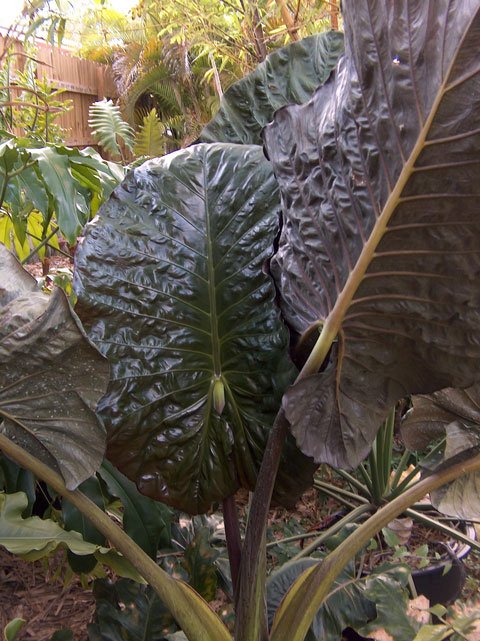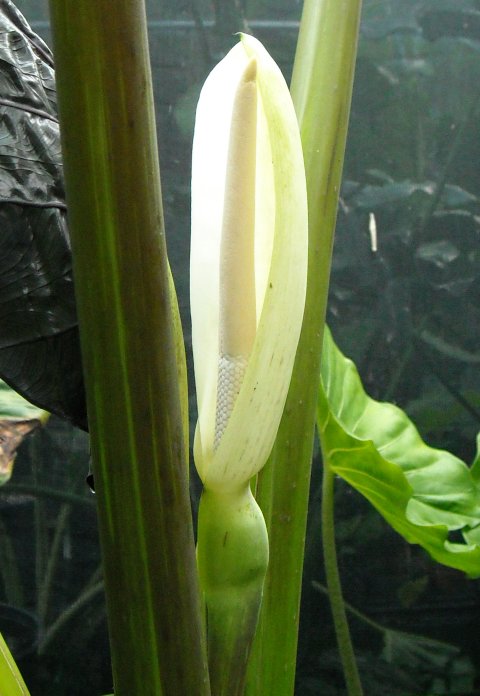
Alocasia "Serendipity"
Just when you think you've seen it all, you find something really stunning at an obscure nursery! I noticed a nursery that seemed to have a lot of Colocasias and Alocasias, so I stopped in. While browsing, I spotted this plant and said to myself, "What is THAT?" On close inspection, I realized it was unlike any colored Alocasia I was familiar with. The label read "Alocasia black stem" and I knew at once that this was not the black petioled Alocasia macrorrhizos, so what was it? My first impression was that it was a colored form of Alocasia alba, but still it wasn't quite right. So the only solution was to purchase one, bring it back to Aroidia Research and compare it to others I have.
Once I saw it next to Alocasia sarawakensis, I observed that the plants had a few morphological similarities. One notable exception to this is the dark coloration. That's why I titled this page originally as "Alocasia 'sarawakensis Dark'"; this plant appears to be a chimeric variegant whose coloration is similar to that of the Alocasia plumbea 'Nigra'.
For commercial production in tissue culture, we have named the all-dark version of this plant, "Serendipity", referring to our fortuitous and unexpected discovery of it.
We also have specimens of this plant in which the petioles are completely free of purplish color, being light green in color, while the undersides of the leaf blades are dark purple as in the specimen shown here. Click here to see an example. Interestingly, several pups in the same pot are like the specimen here with overall purplish coloration, bolstering my theory that this is a chimeric variegant.

Below, after years of patient waiting, is an inflorescence on this plant. The bloom opened this morning (June 15, 2009) and is shown at female anthesis.

Preliminary study of the inflorescence above, and comparing it to the type of inflorescence produced by A. sarawakensis, suggests that this plant is not a variant of A. sarawakensis. The morphology of the inflorescence shown here is much more typical of the type produced by plants in the A. macrorrhizos group than it is of plants in the A. sarawakensis group.
| In the Lab | In the Field | The Species | Fruiting | The Hybrids |